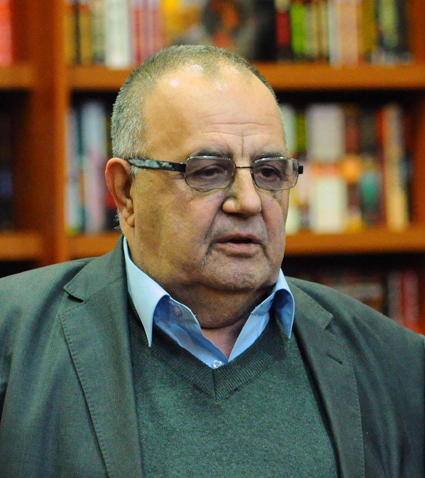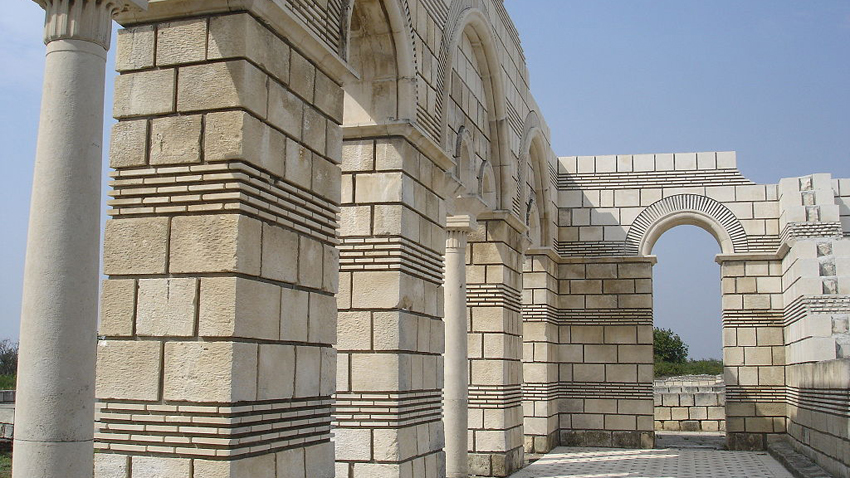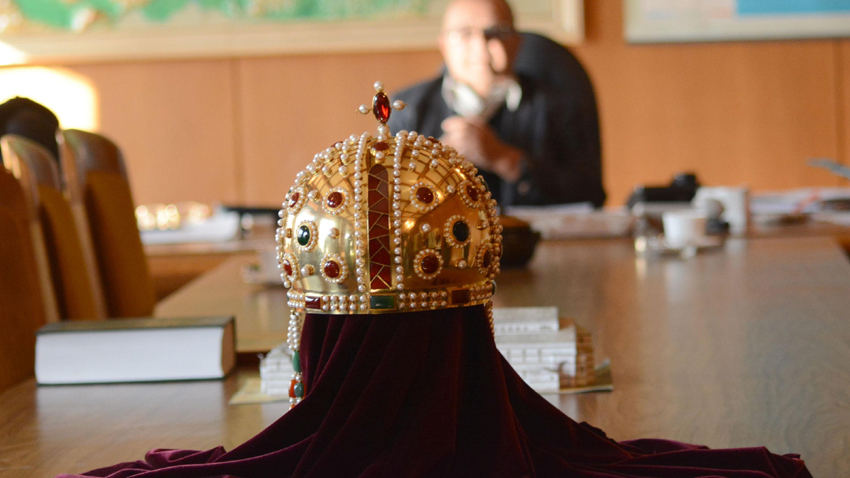Some 279,000 people have visited the National Museum of History and its subsidiaries over the past year, the press center of the Ministry of Culture reports. The medieval Boyana Church was the most visited site, as it is included on UNESCO’s World Heritage List. Nearly 50,000 people, most of them foreigners, had the chance to see it in 2015. Around 35,000 tourists saw the St. St. Theodore Tyron and Theodore Stratelates temple in the village of Dobarsko. The Zemen Monastery and the Radetski Ship also attracted the interest of tourists.
Director of the National Museum of History Prof. Bozhidar Dimitrov says more on the institution’s activities:
 “Last year the museum was assigned by the government to restore two extremely important symbols of the Bulgarian statehood: the crowns of Bulgarian tsars and tsarinas and the Great Basilica in the capital of the First Bulgarian Empire Pliska – the largest temple in Europe up till the 14th century. It was completed in the second half of the 9th century and was ruined by the Turks at the end of the 14th century. It is 102 m long and 30 m wide, built up by massive stone slabs, weighing up to 500 kg each. It was the largest temple in Europe until the 14th century. During the 19th century, Midhat Pasha started the construction of the Ruse-Varna railway and the basilica was fully demolished. Its restoration has recently begun, but archaeological studies have to be finished first. When a building is restored, those have to be 100% complete, according to international standards. We finished archeological studies on November 1 and the restoration itself began with stones from the original quarries, used back in time by Tsar Boris I the Baptizer. The international practice recommends the usage of preserved materials in such cases – stones and bricks from old buildings.”
“Last year the museum was assigned by the government to restore two extremely important symbols of the Bulgarian statehood: the crowns of Bulgarian tsars and tsarinas and the Great Basilica in the capital of the First Bulgarian Empire Pliska – the largest temple in Europe up till the 14th century. It was completed in the second half of the 9th century and was ruined by the Turks at the end of the 14th century. It is 102 m long and 30 m wide, built up by massive stone slabs, weighing up to 500 kg each. It was the largest temple in Europe until the 14th century. During the 19th century, Midhat Pasha started the construction of the Ruse-Varna railway and the basilica was fully demolished. Its restoration has recently begun, but archaeological studies have to be finished first. When a building is restored, those have to be 100% complete, according to international standards. We finished archeological studies on November 1 and the restoration itself began with stones from the original quarries, used back in time by Tsar Boris I the Baptizer. The international practice recommends the usage of preserved materials in such cases – stones and bricks from old buildings.”

The team gathered stones around the basilica and the monastery and assessed that some 10 percent of the material could be old. However, around Christmas Bozhidar Dimitrov surprised them by explaining on TV that history knew well how Midhat Pasha ordered that the stone slabs of the basilica should be turned into brash for the railway embankments.
“However, two viewers called in the next TV show and told me a different story. One of them said: “Mr. Dimitrov, Midhat Pasha was not that stupid – he used the stones for the construction of railway stations and facilities of that kind along the railway.” They gave me a list of the sites which are known to have been preserved, but abandoned during the communist regime. I went there and I was amazed to see that those were really the stones from Pliska. The PM ordered the Minister of Culture to contact the Transport Minister, in order for the stones to be handed over. We are talking here about thousands of cubic meters, according to the architect who has created the project for the basilica’s restoration. Some 70 percent of old material has been used, according to him. Practically, it will be restored mostly with the original stones from the period of Boris I. Thank you, Midhat Pasha, for managing to preserve the stone of our ancient craftsmen in such a manner, enabling its usage now.”

The government granted EUR 250,000 for the temple’s restoration over the last year. Another sum of 300-350,000 euro is expected to be allocated in 2016. Besides that Bozhidar Dimitrov has launched a large-scale donation campaign.
“I don’t want huge sums, I tell everyone on TV that we can do it just like the Jews – when the building of a synagogue is started, as many people as possible participate, with small sums. Thus each and every one of them will know that he or she has 5 bricks or 3 stones in it,” Prof. Dimitrov says.
Even the kids from 4th Primary School “Kiril Hristov” in Stara Zagora made a donation. When contacted, the director said that each child had given up their daily pocket money for snacks and sent it for the project. “I went to the school and gave a talk there as a token of gratitude and warned the kids not to deprive themselves from breakfast in order to grow up healthy Bulgarians,” the historian says.

As far as the crowns mentioned are concerned, the one that Pope Innocent III gifted to the Bulgarian Tsar Kaloyan /1197-1207/ has been recreated entirely with donations. The crown was worn by all Bulgarian tsars after Kaloyan, up to Ivan Shishman. The museum has recently received a Thracian tsar’s crown, as well.
English version Zhivko Stanchev
Photos: Wikipedia and BULFOTOAfter nearly 35 years, the Bulgarian Orthodox Church Community in London has its own church in the central part of the British capital, in close proximity to the Bulgarian Embassy. There, in the prestigious Kensington district, next to Hyde Park and..
Meatfare Sunday in 2025 will be remembered as a major celebration for the Bulgarian Orthodox Church and the entire Bulgarian community in the United Kingdom. The "St. John of Rila" Orthodox Church, built with funds from the Bulgarian state and with..
All Souls' Day (Zadushnitsa in Bulgarian) is an important day for many Christians. On this day, we remember deceased relatives and loved ones. The first of the three All Souls' Days of the year, also known as the Great or All Souls' Day, falls on the..
Meatfare Sunday in 2025 will be remembered as a major celebration for the Bulgarian Orthodox Church and the entire Bulgarian community in the United..
After nearly 35 years, the Bulgarian Orthodox Church Community in London has its own church in the central part of the British capital, in close proximity..

+359 2 9336 661
